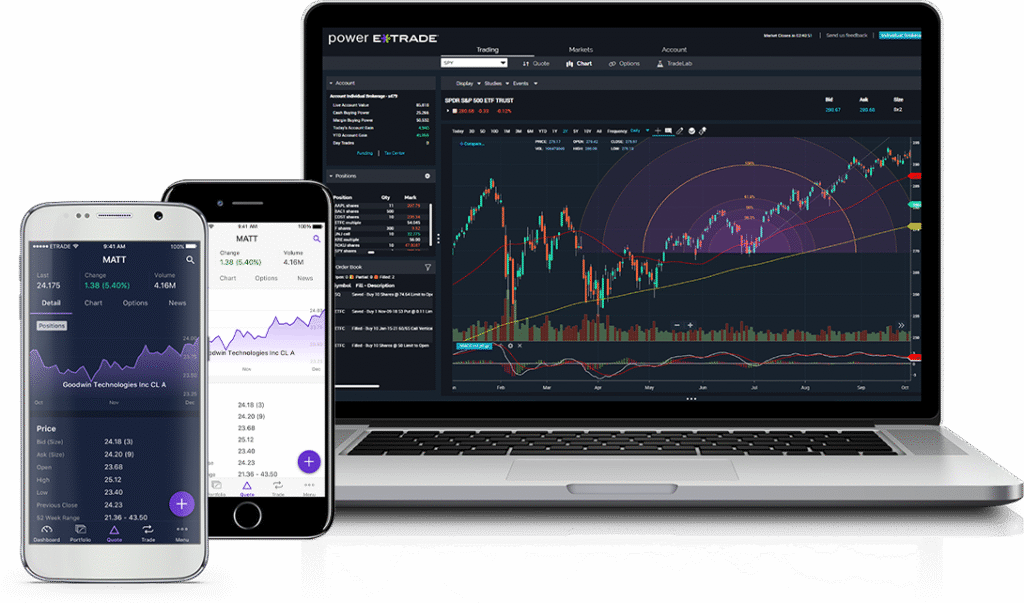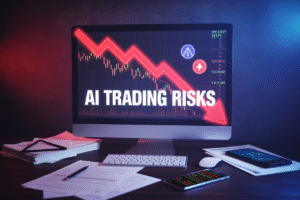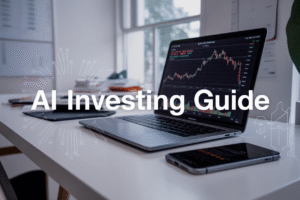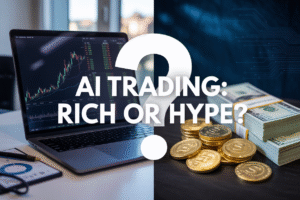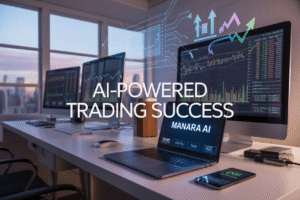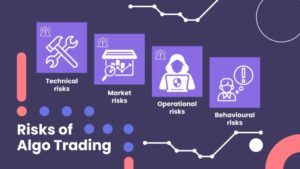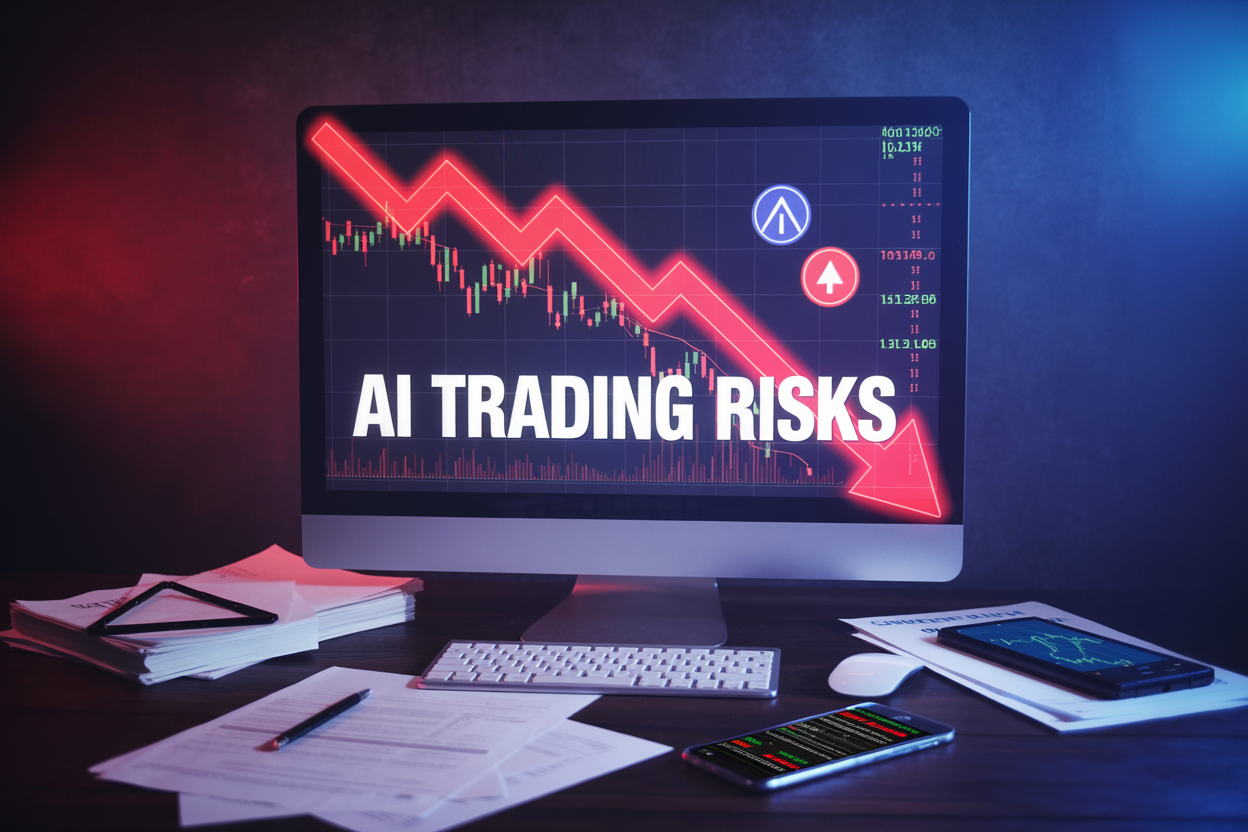
AI trading bots promise effortless profits, but they come with serious risks that can wipe out your investment faster than you can say “algorithmic trading.” This guide is for retail investors, day traders, and anyone considering automated trading solutions who wants to understand what could go wrong before putting their money on the line.
Smart investors know that every trading strategy has downsides, and AI bots are no exception. These automated systems can fail spectacularly due to technical glitches, struggle with unpredictable market conditions, and expose your funds to cyber attacks.
We’ll dive into the most dangerous technical failures that have cost traders millions, explore how market volatility can overwhelm even the smartest algorithms, and reveal the hidden security vulnerabilities that hackers love to exploit. You’ll also learn about the sneaky costs that can eat into your returns and the psychological traps that make automated trading riskier than it appears.
Technical Failures That Can Cost You Money

Software Bugs and Programming Errors
Even the most sophisticated AI trading bots aren’t immune to coding mistakes that can drain your account faster than a bad Vegas streak. Software bugs lurk in the most unexpected places, turning profitable algorithms into money-burning machines overnight.
Consider what happens when a simple decimal point gets misplaced in the code. Your bot might interpret a 1% stop-loss as a 10% stop-loss, or worse, place buy orders for 1,000 shares instead of 100. These aren’t theoretical scenarios – they’ve happened to real traders who watched their accounts get decimated by rogue algorithms.
Programming errors often surface during market conditions the developers never anticipated. A bot might work perfectly during calm trading sessions but completely malfunction when volatility spikes. The code might contain logical flaws that only trigger under specific circumstances, like when certain technical indicators align or when trading volumes exceed expected thresholds.
Update rollouts present another minefield. Bot developers frequently push new features and improvements, but these updates can introduce fresh bugs while fixing old ones. Your previously reliable bot might suddenly start making irrational trades after a routine software update, leaving you scrambling to figure out what went wrong.
System Crashes During Critical Market Moments
Murphy’s Law reigns supreme in automated trading – systems crash exactly when you need them most. Picture this: major economic news breaks, the market starts moving aggressively, and your trading bot decides to take an unscheduled nap. Those missed opportunities and unmanaged positions can cost thousands in minutes.
System crashes don’t discriminate based on market timing. Your bot might freeze during earnings announcements, Federal Reserve meetings, or breaking news events when trading volumes surge and volatility explodes. These are precisely the moments when quick execution matters most, yet they’re also when trading systems face maximum stress.
Memory overload causes many crashes. AI trading bots process massive amounts of data continuously – price feeds, news sentiment, technical indicators, and market depth information. When data streams spike during high-volume trading periods, insufficient system resources can cause the entire platform to freeze or crash.
Operating system conflicts add another layer of vulnerability. Your bot runs on top of Windows, macOS, or Linux, and any of these systems can experience crashes, forced updates, or compatibility issues that bring your trading operation to a halt. Background processes, security scans, or automatic updates can interfere with bot performance at the worst possible moments.
Internet Connectivity Issues and Downtime
Your internet connection becomes the lifeline between your trading bot and the markets, and when it fails, you’re essentially trading blind. Internet outages don’t announce themselves with advance warning – they strike during thunderstorms, when construction crews hit cables, or when your ISP experiences technical difficulties.
Latency issues prove equally problematic. High-frequency trading bots depend on split-second execution, but internet slowdowns can turn winning trades into losses. When your bot’s orders arrive milliseconds late, other algorithms have already moved the market, leaving you buying at peaks and selling at valleys.
WiFi instability creates sneaky problems that many traders overlook. Wireless connections can appear stable while actually dropping packets or experiencing intermittent slowdowns. Your trading dashboard might show everything running smoothly while your bot struggles with degraded connectivity, missing trades or executing them with significant delays.
Backup internet solutions aren’t foolproof either. Mobile hotspots slow down during network congestion, and secondary internet providers often share infrastructure with your primary connection. When major outages occur, both connections might fail simultaneously, leaving your bot completely isolated from the markets.
Hardware Malfunctions Affecting Performance
Computer hardware failures can transform your AI trading bot from a precision instrument into an expensive paperweight. Hard drives crash without warning, taking your trading history, custom configurations, and algorithm parameters with them. RAM failures cause erratic behavior that’s difficult to diagnose, making your bot execute seemingly random trades.
Overheating issues plague many trading setups, especially during summer months or in poorly ventilated spaces. When processors throttle due to excessive heat, your bot’s calculations slow down dramatically. Complex AI algorithms that normally process in milliseconds might take seconds to complete, missing trading opportunities or executing outdated signals.
Power supply failures create cascading problems beyond simple shutdowns. Unstable power can corrupt data files, damage hardware components, and cause system instability that’s hard to detect. Your bot might appear to function normally while actually operating with corrupted configuration files or damaged algorithms.
Age-related hardware degradation sneaks up gradually. Components that worked flawlessly for months start developing intermittent issues. Your bot might work perfectly most of the time but fail during high-stress periods when hardware components reach their operational limits. These sporadic failures are particularly dangerous because they’re unpredictable and often go unnoticed until significant damage occurs.
Market Volatility Risks Beyond Bot Control

Flash Crashes and Extreme Price Movements
AI trading bots work great under normal market conditions, but they can become dangerous during flash crashes. These sudden, dramatic price drops happen within minutes or even seconds, and most algorithms just aren’t fast enough to react properly. When a stock or cryptocurrency loses 20-30% of its value in mere minutes, your bot might continue executing trades based on outdated analysis.
The 2010 Flash Crash is a perfect example. The Dow Jones dropped nearly 1,000 points in minutes before recovering. Many automated trading systems made things worse by selling into the panic, amplifying the crash. Your bot might interpret these extreme movements as strong trend signals and place large positions right at the worst possible moment.
What makes this even scarier is that bots often use stop-loss orders that trigger during these events. But when everyone’s selling at once, your stop-loss might execute at prices far below where you set them. You could lose 40% when you thought your maximum loss was 10%.
Low Liquidity Conditions Amplifying Losses
Trading bots assume they can buy and sell whenever they want, but that’s not always true. During low liquidity periods, there simply aren’t enough buyers and sellers in the market. Your bot might try to execute a trade, but the price moves against you significantly just from your own order.
This problem gets worse in smaller markets or during off-hours. If your bot decides to sell 1,000 shares of a thinly traded stock, that sell order might push the price down 5-10% immediately. The same trade during normal hours might only move the price 0.5%.
Cryptocurrency markets face this challenge regularly. During weekend hours or major holidays, trading volumes can drop by 70-80%. Your bot might get excellent signals to enter trades, but executing them becomes expensive due to wide bid-ask spreads. What looked like a profitable opportunity turns into an instant loss because of poor execution prices.
Unexpected News Events Disrupting Algorithms
Trading bots analyze historical data and technical patterns, but they can’t predict breaking news. When major events hit the market, your bot is essentially trading blind. Whether it’s an unexpected earnings announcement, geopolitical crisis, or regulatory change, these events can instantly make your bot’s analysis worthless.
Consider what happens when a company announces a surprise acquisition or faces a major lawsuit. Stock prices can gap up or down 30-50% before your bot even realizes something changed. The algorithm continues following its programmed strategy, potentially buying into a falling knife or selling a rocket ship.
Even worse, some bots increase position sizes when they see strong signals. If your algorithm interprets the initial price movement from breaking news as a trend, it might double down on a position just as the market realizes the news is actually terrible. You end up with maximum exposure at the worst possible time.
News sentiment analysis in bots helps somewhat, but it’s not foolproof. The algorithm might misinterpret sarcasm, fail to understand context, or react to fake news. Social media can spread false information faster than fact-checkers can debunk it, leaving your bot making decisions based on completely wrong information.
Algorithm Limitations and Blind Spots

Over-Reliance on Historical Data Patterns
Trading bots learn from past market behavior, treating historical data as their roadmap for future profits. This creates a dangerous assumption that what worked yesterday will work tomorrow. Markets evolve constantly, influenced by new technologies, changing regulations, geopolitical shifts, and emerging economic trends that weren’t present in historical datasets.
When bots encounter market conditions they’ve never seen before, they often apply outdated patterns that no longer match reality. For example, a bot trained on pre-pandemic data might struggle with the unique volatility patterns that emerged during COVID-19. The algorithm keeps looking for familiar signals that simply don’t exist in the new environment.
This backward-looking approach becomes especially problematic during black swan events or structural market changes. Your bot might recognize a pattern that historically preceded a bullish trend, but fail to account for unprecedented circumstances that make this pattern irrelevant or even counterproductive.
Inability to Adapt to Changing Market Conditions
Most trading bots operate with fixed algorithms that can’t learn or adjust in real-time. They follow predetermined rules regardless of whether market dynamics have shifted dramatically since their last update. This rigidity becomes costly when markets transition between different phases or regimes.
Consider how interest rate cycles affect trading strategies. A momentum-based bot that performed well during low-rate environments might generate consistent losses when central banks aggressively raise rates. The bot continues executing the same strategies without recognizing that the fundamental market structure has changed.
Machine learning models face their own adaptation challenges. While they can theoretically learn from new data, they often require extensive retraining periods during which they might underperform. Many retail bots lack sophisticated adaptive mechanisms, leaving traders stuck with strategies that worked months ago but fail today.
False Signals Leading to Poor Trading Decisions
Bots excel at identifying patterns, but they can’t distinguish between meaningful signals and random market noise. This leads to false positives where the algorithm triggers trades based on patterns that appear significant but actually represent normal market fluctuations.
Technical indicators that bots rely on often conflict with each other or generate misleading signals during sideways markets. A bot might interpret temporary price movements as the beginning of a major trend, entering positions at precisely the wrong time. These false signals multiply during high-frequency trading, where milliseconds matter and there’s no time for human oversight.
Market manipulation and algorithmic trading by institutional players can create artificial patterns that fool retail bots. Professional traders sometimes exploit these predictable responses, essentially using retail bots’ own strategies against them.
Lack of Fundamental Analysis Capabilities
Trading bots typically focus purely on technical analysis, ignoring fundamental factors that drive long-term market movements. They can’t read earnings reports, analyze management changes, assess competitive landscapes, or evaluate macroeconomic trends that might make their technical signals irrelevant.
A bot might identify a perfect technical setup for buying a stock just as the company announces disappointing earnings or regulatory troubles. While human traders would immediately recognize these fundamental red flags, bots continue following their technical rules blindly.
This limitation becomes particularly dangerous during earnings seasons, product launches, or major news events. Bots might maintain positions or enter new trades based on technical patterns while ignoring fundamental catalysts that could dramatically impact price movements in the opposite direction.
Security Vulnerabilities and Hacking Threats
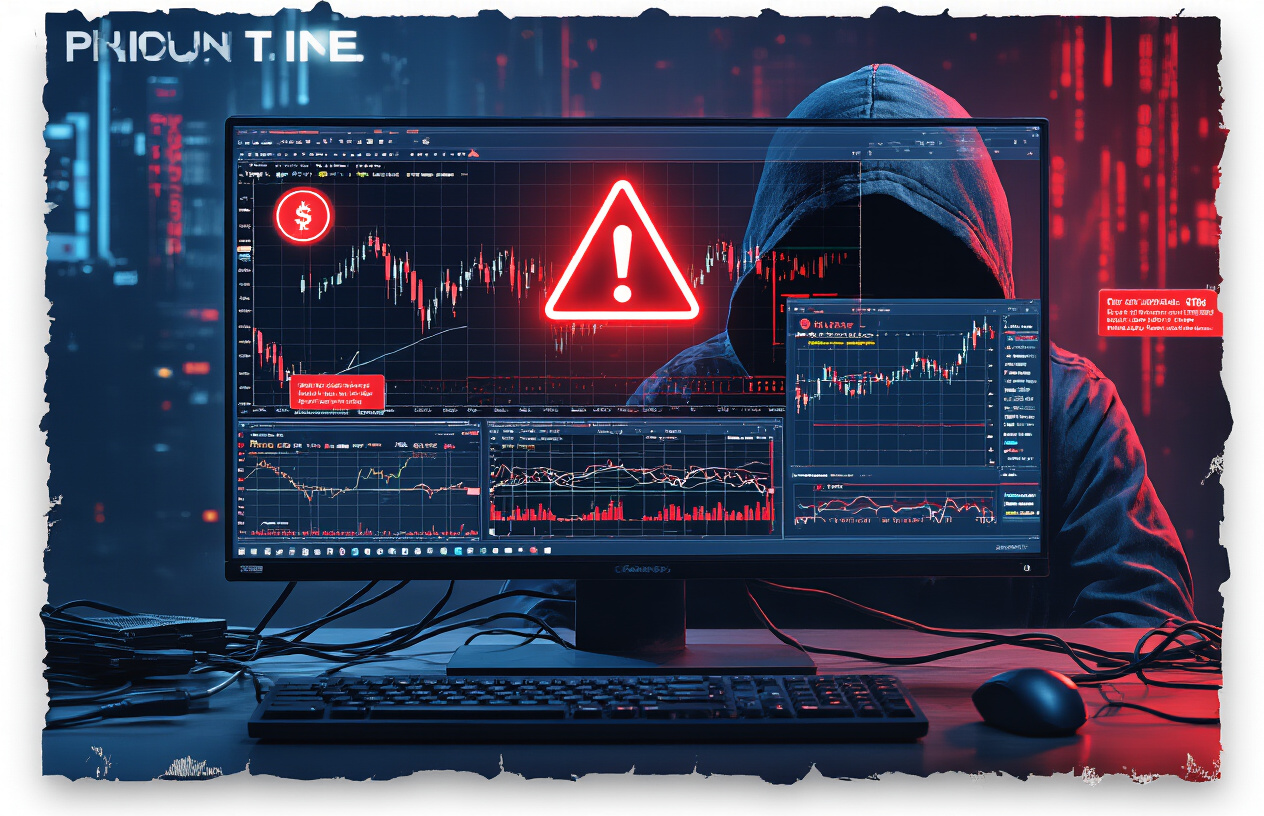
Exchange API Key Compromises
Your API keys are basically the digital passwords that give trading bots access to your exchange account. When these get compromised, hackers can drain your funds faster than you can say “stop loss.” The scary part? Many investors don’t even realize their keys have been stolen until it’s too late.
Exchange API keys often get exposed through multiple attack vectors. Phishing emails trick users into entering credentials on fake exchange websites, while malware can scan your computer for stored API keys. Some traders accidentally share their keys in screenshots, Discord chats, or GitHub repositories without realizing the sensitive information is visible.
The damage from compromised API keys can be devastating. Attackers can place massive buy orders on obscure coins they already hold, artificially pumping the price before dumping their holdings. They might also transfer funds to external wallets or manipulate your trading positions to maximize losses while they profit on the other side.
Protecting your API keys requires serious attention to detail. Never store them in plain text files, always use IP whitelisting to restrict access from unknown locations, and regularly rotate your keys. Enable withdrawal restrictions through your exchange settings, and consider using separate API keys with limited permissions for different trading activities.
Malicious Bot Software and Scams
The AI trading bot market is crawling with scams designed to separate you from your money. Fake trading platforms promise unrealistic returns while secretly stealing deposits, and malicious software disguised as legitimate trading bots can install backdoors on your computer.
Romance scams have evolved to target crypto traders, with scammers building relationships over months before introducing victims to “exclusive” trading bots. These bots typically show fake profits initially, encouraging larger deposits before disappearing with all funds. Social media platforms are flooded with fake testimonials and doctored screenshots showing impossible returns.
Cloud-based trading services present another layer of risk. Some platforms claim to run your bot strategies on their servers but actually engage in front-running, using your trading signals for their own benefit while providing you with mediocre results. Others simply collect monthly fees while running basic, unprofitable algorithms.
Due diligence becomes critical when evaluating bot software. Check the development team’s background, read independent reviews from multiple sources, and start with minimal funds to test performance. Legitimate bot providers offer transparent fee structures, clear documentation, and don’t promise guaranteed profits.
Data Breaches Exposing Trading Strategies
Your trading strategies represent valuable intellectual property, and data breaches can expose this information to competitors or bad actors. When bot platforms get hacked, attackers gain access to thousands of users’ trading algorithms, position sizes, and market timing preferences.
This exposed data creates several problems beyond immediate financial loss. Competitors can reverse-engineer successful strategies, reducing their effectiveness over time. Market makers might identify common bot patterns and trade against them, while sophisticated attackers could use the information for targeted social engineering attacks.
Historical trading data breaches have revealed surprising details about user behavior. Attackers often discover which users are most profitable, what time zones they operate in, and how much capital they’re deploying. This information becomes valuable for planning future attacks or manipulating specific markets where certain bot strategies are concentrated.
The long-term impact of strategy exposure can be more damaging than immediate theft. Once your trading approach becomes public knowledge, its edge in the market may disappear permanently. Professional traders spend years developing profitable strategies, and having them exposed through a data breach can destroy months or years of competitive advantage.
Hidden Costs That Erode Your Profits

High Frequency Trading Fees Adding Up
AI trading bots can execute hundreds or even thousands of trades per day, and each transaction comes with fees that pile up quickly. Most brokers charge between $0.50 to $5.00 per trade, which might seem negligible at first glance. However, when your bot makes 50 trades daily, you’re looking at $25 to $250 in daily fees alone – potentially $9,000 to $91,000 annually just in trading commissions.
Even “commission-free” platforms aren’t truly free. They make money through bid-ask spreads, payment for order flow, or premium features. High-frequency trading amplifies these hidden costs exponentially. Your bot might capture small price movements of 0.1% to 0.3%, but trading fees can easily eat 0.05% to 0.2% of each trade’s value, dramatically reducing your net profits.
Many traders discover too late that their seemingly profitable bot strategy becomes unprofitable once fees are factored in. A bot showing 12% annual returns might actually deliver only 3-5% after accounting for transaction costs.
Subscription and Licensing Expenses
Professional AI trading bots come with substantial ongoing costs that many investors overlook. Premium bot services typically charge $50 to $500 monthly for basic packages, while advanced institutional-grade platforms can cost $2,000 to $10,000+ per month.
Beyond the bot itself, you’ll need real-time market data feeds, which range from $25 to $300 monthly per exchange. Add cloud hosting for 24/7 operation ($100-500 monthly), backup systems, and API access fees, and your monthly overhead easily reaches $300-1,000 for a serious trading operation.
Many providers use tiered pricing models that increase costs as your trading volume grows. What starts as a $99 monthly subscription can balloon to $500+ as your bot becomes more active. Some platforms also charge percentage-based fees on profits, typically 10-30% of gains, creating a significant drag on returns.
Slippage Costs in Fast-Moving Markets
Slippage occurs when your bot’s intended trade price differs from the actual execution price, especially during volatile market conditions. AI bots often rely on rapid execution, but even millisecond delays can result in unfavorable price movements that erode profits.
In fast-moving markets, slippage can range from 0.1% to 2% per trade. For high-frequency strategies, this represents a massive cost. If your bot attempts to buy a stock at $100 but actually executes at $100.50 due to slippage, that 0.5% difference multiplied across hundreds of daily trades creates substantial losses.
Market makers and institutional traders with superior technology and direct market access often front-run retail AI bots, causing additional slippage. Your bot might identify an opportunity, but by the time the order reaches the market, the price has already moved against you.
Tax Complications from Excessive Trading
AI trading bots generate complex tax situations that can significantly impact your bottom line. Each trade creates a taxable event, and high-frequency trading can result in thousands of transactions requiring individual tax reporting. Short-term capital gains (positions held less than one year) are taxed as ordinary income, potentially at rates up to 37% in the US.
Professional tax preparation for active trading accounts can cost $2,000 to $10,000 annually. Many traders underestimate these professional fees and the time required for proper record-keeping. Inadequate documentation can trigger IRS audits and penalties.
The wash sale rule adds another layer of complexity. When your bot sells a stock at a loss and repurchases it within 30 days, the loss becomes non-deductible, potentially creating unexpected tax liabilities. AI bots often trigger wash sales repeatedly throughout the year, complicating tax calculations and reducing the benefit of trading losses.
Regulatory and Legal Compliance Issues
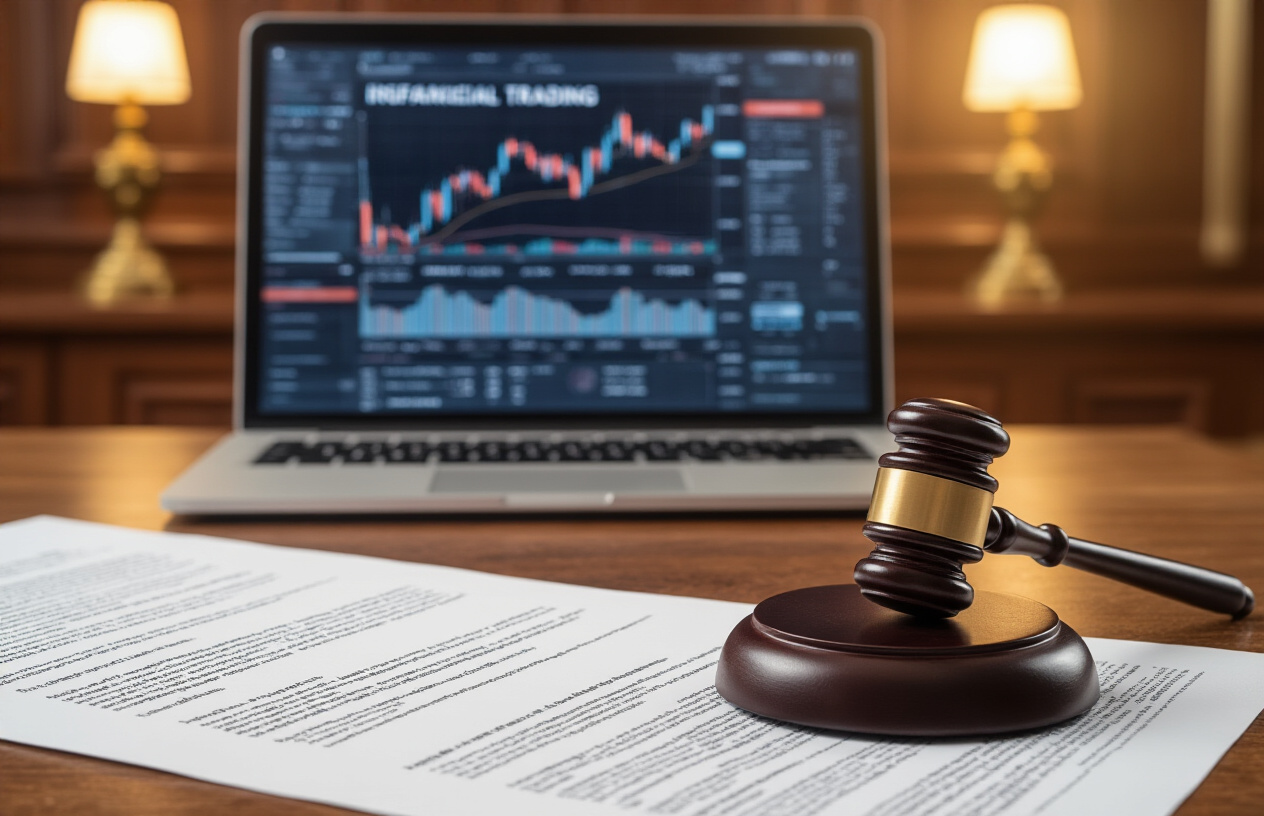
Changing Financial Regulations Affecting Bots
Financial regulators worldwide are scrambling to keep up with AI trading technology, creating a constantly shifting landscape that bot users must navigate. The SEC, CFTC, and international bodies regularly update rules around algorithmic trading, often with little warning to retail investors.
Recent regulatory changes include stricter reporting requirements for high-frequency trading systems and new registration mandates for certain types of automated trading software. Some jurisdictions now require pre-approval for AI trading algorithms, while others have imposed cooling-off periods between trades to prevent market manipulation.
The challenge? These regulations often target institutional traders but can inadvertently impact retail bot users. Your personal trading bot might suddenly fall under new compliance requirements, forcing you to shut down operations or face hefty penalties. European markets have been particularly aggressive, with MiFID II regulations creating complex obligations for automated trading systems that many individual investors don’t fully understand.
Tax Reporting Complexities for Automated Trades
AI trading bots can execute hundreds or thousands of trades per day, creating a paperwork nightmare when tax season arrives. Each transaction generates taxable events that must be properly categorized, documented, and reported to tax authorities.
The complexity multiplies when dealing with:
- Wash sale rules: Bots might inadvertently trigger wash sale violations by repurchasing similar securities within 30 days
- Short-term vs. long-term gains: High-frequency bot trading typically generates short-term capital gains taxed at higher ordinary income rates
- Cross-exchange transactions: Bots trading across multiple platforms create additional tracking challenges
- Cryptocurrency complications: Crypto trading bots face even more complex tax scenarios with unclear regulatory guidance
Many standard tax software packages can’t handle the volume and complexity of bot-generated trades. Professional tax preparation becomes almost mandatory, adding significant costs to your trading operation. Some investors discover years later that their bot’s trading pattern created massive tax liabilities they never anticipated.
Potential Legal Liability for Bot Actions
When your AI trading bot makes decisions, who’s legally responsible? The answer isn’t always clear, and that ambiguity creates serious legal risks for bot operators.
Market manipulation charges represent the biggest threat. If your bot’s algorithm inadvertently creates artificial price movements or engages in patterns that regulators interpret as manipulative, you could face civil and criminal penalties. The fact that the bot acted autonomously doesn’t automatically shield you from liability.
Securities regulators have successfully prosecuted individuals whose trading algorithms violated market rules, even when the operators claimed they didn’t intend harmful outcomes. The legal standard often focuses on the reasonably foreseeable consequences of deploying your bot, not just your intentions.
Insurance coverage for algorithmic trading losses remains limited and expensive. Most standard investment account protections don’t cover losses from bot malfunctions or regulatory violations. This leaves individual traders personally exposed to potentially catastrophic legal and financial consequences from their bot’s actions.
Professional traders often carry specialized errors and omissions insurance, but retail bot users rarely have such protection, creating an asymmetric risk profile that many don’t recognize until problems arise.
Psychological Risks of Automated Trading
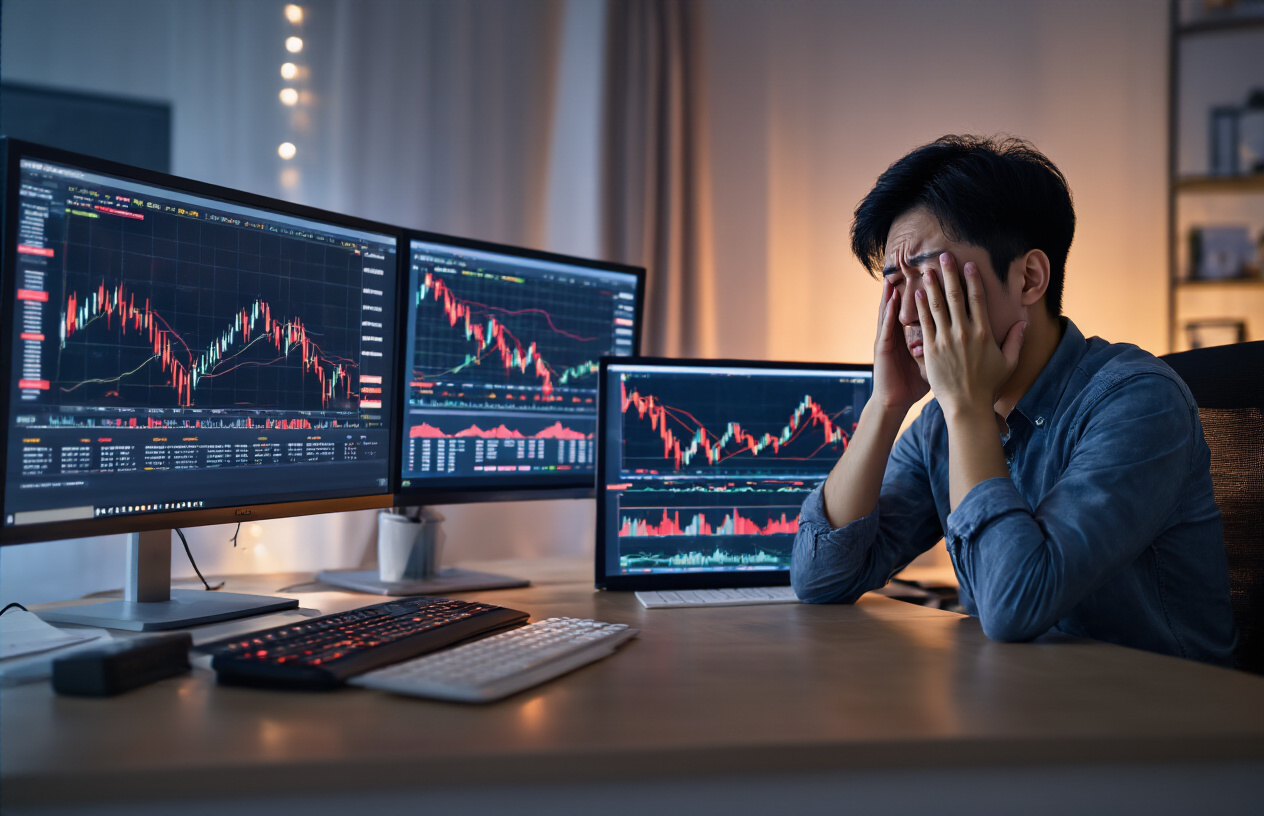
False Sense of Security Leading to Overconfidence
Trading bots create a dangerous illusion that investing has become effortless and risk-free. When algorithms execute trades automatically, many investors begin to believe they’ve eliminated human error and emotional decision-making from the equation. This false confidence leads to reckless behavior that can wipe out accounts faster than manual trading ever could.
The smoothness of automated systems tricks people into thinking they’ve mastered the markets without putting in the work. Investors start allocating larger portions of their portfolios to bot trading, convinced that technology has solved the age-old problem of market unpredictability. They ignore warning signs like extended losing streaks or unusual market conditions because they trust their algorithms more than their own judgment.
This overconfidence becomes particularly dangerous during market downturns. When bots start losing money consistently, overconfident investors often double down instead of reassessing their strategy. They blame temporary glitches rather than acknowledging that their algorithms might be fundamentally flawed or unsuited for current market conditions.
Loss of Trading Skills and Market Understanding
Relying heavily on trading bots gradually erodes the fundamental skills every successful investor needs. When algorithms handle all the analysis, decision-making, and execution, traders become passive observers rather than active participants in their financial future.
Market intuition develops through hands-on experience – reading charts, analyzing news impacts, and feeling the emotional weight of each trade. Bot users miss out on this crucial learning process. They can’t recognize market patterns, understand price movements, or develop the instinct that separates successful traders from those who consistently lose money.
The most concerning aspect is how quickly these skills deteriorate. Traders who previously could read market sentiment and time their entries find themselves lost when they need to make manual decisions. They become completely dependent on their algorithms, leaving them helpless when technical failures occur or market conditions change beyond their bot’s programming.
Professional traders understand that market dynamics constantly evolve. New patterns emerge, old strategies stop working, and unexpected events shake up established trends. Without maintaining active engagement with the markets, bot users can’t adapt to these changes or recognize when their automated strategies have become obsolete.
Addiction to Constant Market Monitoring
Trading bots paradoxically increase the time investors spend watching markets rather than freeing them up for other activities. The 24/7 nature of automated trading creates an unhealthy obsession with constant monitoring and tweaking.
Many bot users check their accounts multiple times per hour, refreshing profit and loss statements compulsively. This behavior stems from the illusion of control – they believe that by watching closely, they can somehow influence their bot’s performance or catch problems before they escalate.
The addiction intensifies because bots provide a continuous stream of data and activity. Every executed trade, every small profit or loss, becomes a source of emotional stimulation. Users get hooked on the dopamine hits from successful trades and the anxiety spikes from losses, creating a gambling-like psychological dependency.
Sleep patterns suffer as traders wake up to check overnight performance or worry about positions running while they’re away. Relationships strain under the weight of constant market preoccupation. Work productivity drops as employees sneak peeks at their trading accounts throughout the day.
This compulsive monitoring defeats the primary purpose of automated trading – to reduce the time and emotional energy spent on investing. Instead of achieving financial freedom, many bot users become more enslaved to the markets than ever before, trapped in a cycle of obsessive oversight that provides little actual benefit to their trading outcomes.
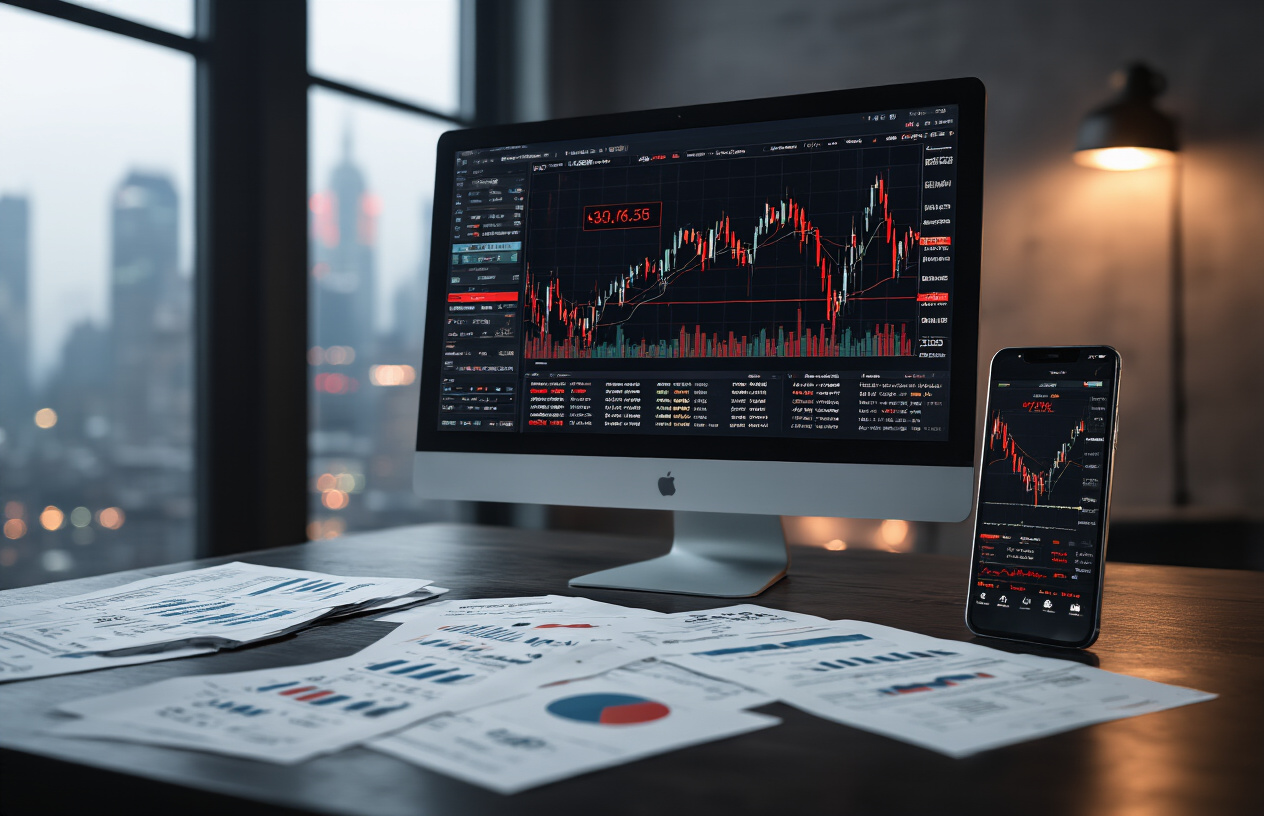
AI trading bots might seem like a shortcut to easy profits, but they come with serious risks that can hit your wallet hard. Technical glitches can cause massive losses in seconds, while market chaos can overwhelm even the smartest algorithms. Your bot might miss crucial market signals, fall victim to hackers, or rack up hidden fees that eat away at your gains. Plus, you’re dealing with a regulatory landscape that’s still figuring out how to handle automated trading.
Before you hand over your investment decisions to a robot, take a step back and really understand what you’re getting into. Set strict limits on how much the bot can trade, keep a close eye on its performance, and never invest more than you can afford to lose. The best approach is treating AI trading bots as tools that need constant supervision, not magic money-making machines you can set and forget.

